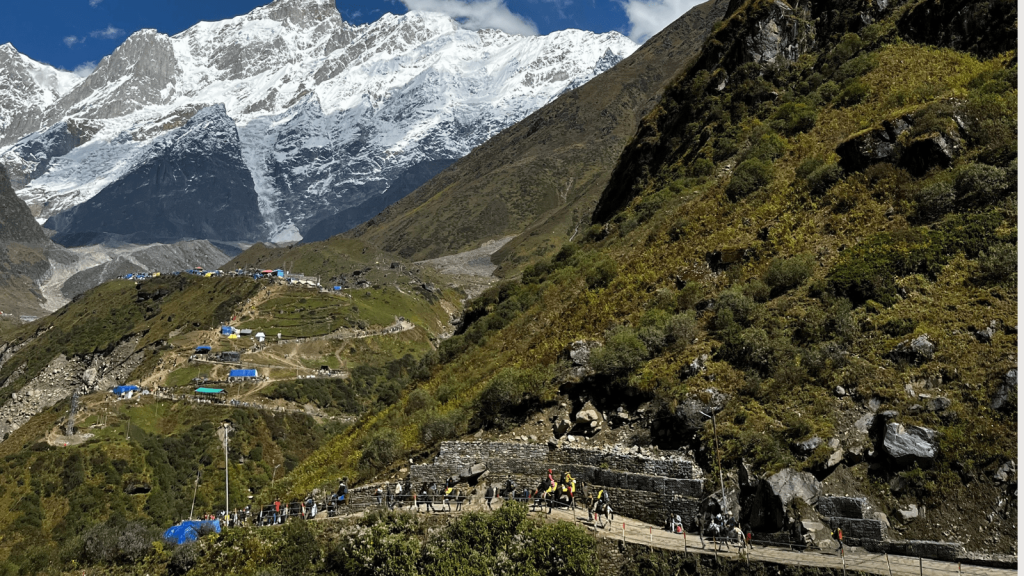Leadership development is an important skill to have in any career or life path. Trek leading is a great way to develop and strengthen leadership skills.
This blog will explore the many benefits of trek leading for leadership development, such as improved communication, decision making, and problem solving skills. It will also discuss how trek leading can help build confidence, trust, and collaboration with others.
Finally, this blog will look at how these skills can be put into practice in different situations.
Why Trek Leading Is One Of The Best Activities For Leadership Building
What is Trek Leading?
Trek leading is leading a group of trekkers on an expedition in the wilderness. A trek leader isresponsible for planning, organizing, executing, and managing all aspects of the trek, such as route selection, safety measures, logistics, equipment, communication, emergency response, andteam building. A trek leader also acts as a mentor, coach, motivator, and educator for thetrekkers.
Trek leading requires hard and soft skills essential for any leader. Hard skills include technical knowledge and expertise in mountaineering, navigation, first aid, and survival skills, soft skills Include communication, interpersonal, problem-solving, decision-making, and emotional intelligence, etc
How Trek Leading Builds Leadership Skills
Trek leading provides ample opportunities to practice and enhance your leadership skills in real-life situations. Here are some ways trek leading can help you become a better leader:
Leading by Example
As a trek leader, you must set high standards for yourself and your team, including discipline, professionalism, ethics, and respect. You need to demonstrate these values through your actions, words, and attitude.
Effective Communication
Trek leaders need to communicate concisely, confidently, and respectfully with diverse groups of people, such as trekkers, staff, and locals. It's essential to adapt your communication style according to the audience's purpose, tone, and preferences.
Diversity and Teamwork
Trek leaders must work with people from different backgrounds, cultures, personalities, and preferences. You must understand their needs, expectations, strengths, weaknesses, and motivations to foster trust, cooperation, collaboration, diversity, and inclusion among team members.
Creative Problem-Solving
Trek leaders face various challenges, risks, obstacles, and uncertainties during the trek. You have to analyze, evaluate, prioritize, strategize, implement, monitor, and review solutions for these problems. Creativity, innovation, improvisation, adaptation, and resilience are crucial skills for effective problem-solving.
Confident Decision-Making
Trek leaders need to make quick, informed, responsible, and ethical decisions that affect themselves, their team, their organization, and the environment. Before making decisions, consider the pros, cons, risks, benefits, alternatives, consequences, implications, and feedback.
Stress Management
Trek leaders face various physical, mental, emotional, and social environmental pressures, demands, expectations, responsibilities, uncertainties, changes, conflicts, crises, and emergencies during the trek. Coping, balancing, relaxing, recovering, recharging, resilience, optimism, positivity, gratitude, mindfulness meditation, breathing exercises, yoga, hobbies, music, reading, writing, journaling, talking, listening, sharing, seeking help, support, guidance, counseling, coaching, mentoring, therapy, medication, self-care, self-love, self-compassion, self-forgiveness, self-esteem, self-confidence, self-awareness, self-improvement, self-growth, self-development, and self-actualization are essential for effective stress management.
Benefits of Trek Leading
Trek leading can bring numerous benefits to oneself, their team, organization, and society. Some of these benefits include:
Personal Growth
Personal growth is a continuous process of self-improvement and development that involves enhancing various aspects of one's life, such as skills, knowledge, attitudes, values, beliefs, perspectives, wisdom, experiences, memories, accomplishments, recognition, rewards, satisfaction, and fulfillment. To enhance personal growth, individuals must actively seek opportunities for learning, reflection, goal-setting, and self-improvement. Cultivating a positive mindset and attitude can also help in achieving personal growth, such as developing a growth mindset that embraces challenges, failures, and setbacks as opportunities for learning and improvement.
Team-Building 5-Minute Activities
Team-building 5-minute activities are quick games and icebreakers that improve teamwork and enhance cohesion in teams. These activities are ideal for energizing meetings and promoting collaboration. Some examples of team-building 5-minute activities include:
Name the Logo - where teams guess the names of semi-popular logos</li> <li>Balloon Game - where teams keep a balloon in the air using only their breath
Two Truths and a Lie - where employees share true and false statements about themselves, and the group guesses which one is a lie
Team-Building Leadership Activities
Team-building leadership activities are games and events that encourage members to work together towards a common goal while individually taking charge of the situation. These activities instill workplace teamwork and respect while motivating employees to reevaluate personal working principles.
Examples of Team-Building Leadership Activities
Did You Know?
This exercise is an excellent way to get to know your teammates better and build trust. Ask each participant to write down three facts about themselves, one of which is false. Then have them share their facts with the group and guess which one is false.
Blindfold Challenge
This activity tests communication and collaboration skills. Divide the group into pairs and blindfold one person in each pair. The other person has to guide their blindfolded partner through an obstacle course using only verbal instructions.
Leader for a Day
This activity challenges participants to step out of their comfort zone and take on a leadership role for a day. Assign each participant a different department or project to lead for a day and have them report on their experience at the end of the day.









